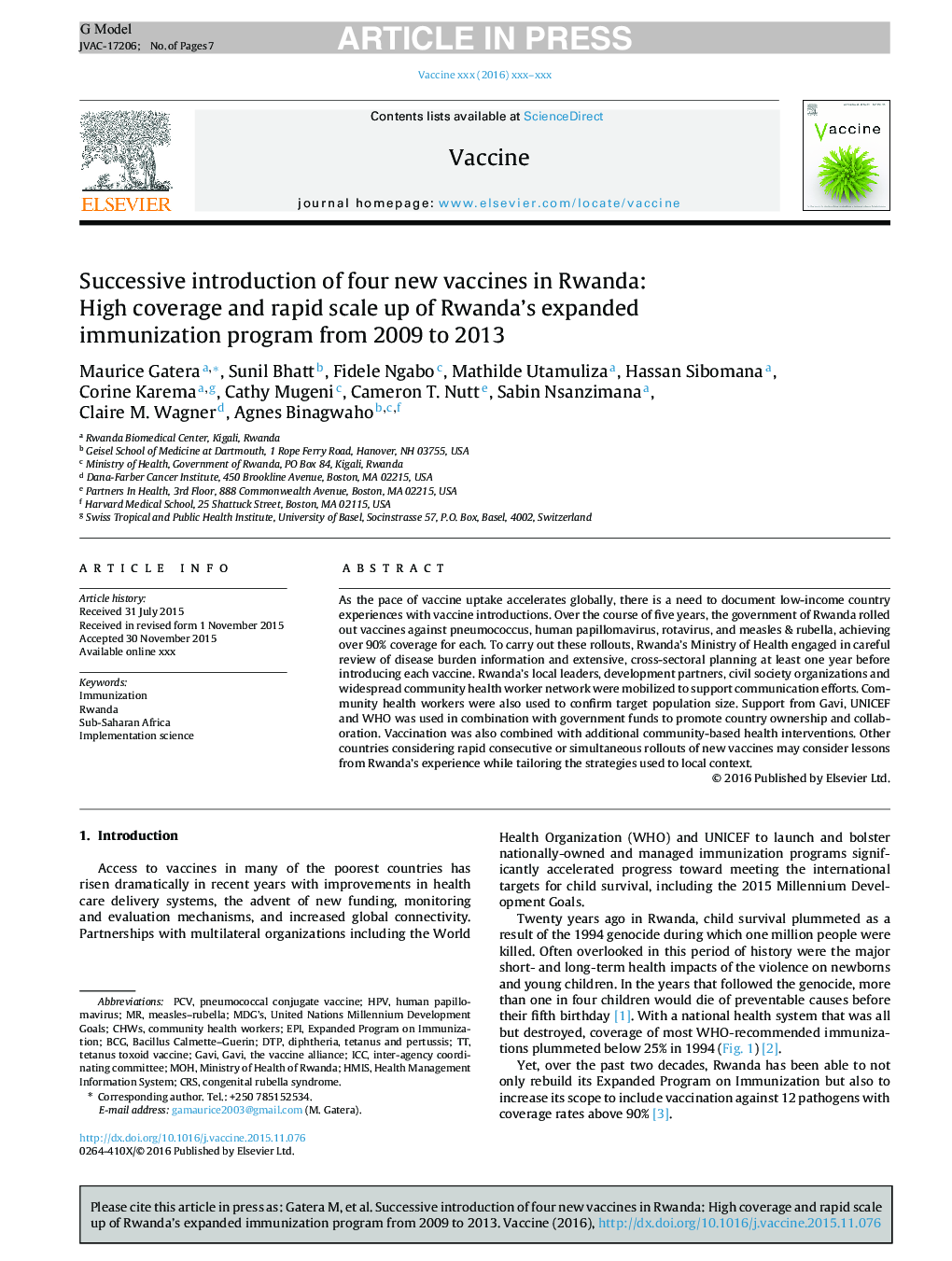| Article ID | Journal | Published Year | Pages | File Type |
|---|---|---|---|---|
| 10962430 | Vaccine | 2016 | 7 Pages |
Abstract
As the pace of vaccine uptake accelerates globally, there is a need to document low-income country experiences with vaccine introductions. Over the course of five years, the government of Rwanda rolled out vaccines against pneumococcus, human papillomavirus, rotavirus, and measles & rubella, achieving over 90% coverage for each. To carry out these rollouts, Rwanda's Ministry of Health engaged in careful review of disease burden information and extensive, cross-sectoral planning at least one year before introducing each vaccine. Rwanda's local leaders, development partners, civil society organizations and widespread community health worker network were mobilized to support communication efforts. Community health workers were also used to confirm target population size. Support from Gavi, UNICEF and WHO was used in combination with government funds to promote country ownership and collaboration. Vaccination was also combined with additional community-based health interventions. Other countries considering rapid consecutive or simultaneous rollouts of new vaccines may consider lessons from Rwanda's experience while tailoring the strategies used to local context.
Keywords
ICCBCGCRSEPITetanus toxoid vaccineDTPHMIsCHWsBacillus Calmette–GuérinImmunizationExpanded Program on ImmunizationSub-Saharan AfricaRwandaCongenital rubella syndromeHealth Management Information SystemImplementation sciencePneumococcal conjugate vaccineMoHHuman papillomavirusHPVPCVCommunity health workersGAVI
Related Topics
Life Sciences
Immunology and Microbiology
Immunology
Authors
Maurice Gatera, Sunil Bhatt, Fidele Ngabo, Mathilde Utamuliza, Hassan Sibomana, Corine Karema, Cathy Mugeni, Cameron T. Nutt, Sabin Nsanzimana, Claire M. Wagner, Agnes Binagwaho,
